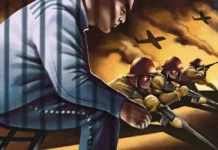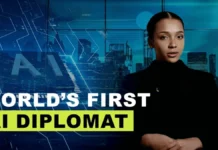The word narrative has for some time dominated conversations about digital diplomacy. At the most basic level, narratives are viewed as compelling stories through which state and non-state actors can explain their policies and actions. The narrative is thus a rhetorical and visual device that replaces official press statements lined with diplomatic double entendres and bureaucratic language. At a more sophisticated level, narratives may be used to obtain influence. Diplomats from country A can craft messages that resonate with the historical narratives of country B thus building relationships with the citizens of country B.
At another level, narratives may be used to misinform. Countries can craft narratives that contest facts or promote false information. Given that the narrative takes the form of a story, it is likely to have some influence on a target audience as humans are storytellers by nature. At the most sophisticated level a narrative can be a unifying element bringing people and nations together. Narratives can emphasize a shared past, make sense of a shared present and outline a vision for a shared future. Such is the case with the EU’s narrative which suggests that the Union was born out of the bitter lessons and destructiveness of WWII.
Digital technologies can magnify the positive and negative effects of narratives. Social media sites, for instance, are storytelling platforms. They offer one the ability to mix rhetorical and visual elements so as to craft a compelling narrative, whether it is a personal narrative of survival or a national narrative of achievement. Presently, the North Atlantic Treaty Organization (NATO) is using Twitter to tell its own narrative through the #WeAreNATO campaign.
According to the campaign website, NATO’s narrative is one of many of allied states coming together to obtain one important goal- securing peace and freedom for their citizens. It is this goal that binds together the Italian cartographer, the Romanian technician, the U.S. paratrooper and the Icelandic coastguard. On Twitter however, the goal of NATO appears to be quite different. Tweets published in recent weeks using the #WeAreNATO all focus on NATO’s military capabilities and its readiness to defend the borders of allied states. The narrative of NATO on Twitter therefore does not deal with “who we are” but “what we are”- a military alliance which is as relevant today as it was during the Cold War.
We Are NATO website

One Tweet that best encapsulates what NATO is can be seen below. This Tweet, published by NATO’s press officer, does not emphasize peace, security or democracy but rather capability and readiness.
The same is true of a host of Tweets recently published by the U.S. Embassy in London, the German Delegation to NATO, the U.S. Mission to NATO and accounts operated by NATO military units. What is most striking about these Tweets is that they make no reference to the norms and values that NATO subscribes to or the freedoms it promises to protect.
One could argue that NATO’s narrative on Twitter is born out of necessity, rather than desire. In the wake of Russia’s annexation of Crimea, NATO could be using Twitter to send Moscow a clear signal, that it is ready to meet any challenge along its borders. It is also possible that NATO is attempting to demonstrate a firm commitment to its Eastern flank in the wake of Crimea. This narrative could also s a rebuttal to Russia’s digital narratives which target the Baltic States and portray NATO as a violator of state sovereignty. Such is the case with the Tweet below in which a NATO tank is used for public outreach in Latvia.
Lastly, NATO could be emphasizing its shared capabilities, and close military coordination, so as to demonstrate America’s commitment to the alliance even under the Presidency of Donald Trump. Indeed, over the past three weeks the majority of U.S. Embassies in Europe have all published Tweets relating to NATO exercises, America’s commitment to its NATO allies and America’s military support of NATO. Through these Tweet U.S. diplomats may quell fears among Europeans that Trump’s America is no longer invested their safety and prosperity. The map below identifies U.S. Embassies in Europe that have Tweeted about NATO over the past three weeks, some of them using the #WeAreNATO.
U.S Embassies Tweeting About NATO

Yet one has to wonder if NATO’s Twitter narrative would not be more compelling had it clearly identified the norms and values for which it was fighting. The reason for this is that people throughout the world have had enough of pragmatism. In an age defined by diplomatic compromises and multi-lateral paralysis, values can resonate with digital publics. Moreover, shared values are what forged the NATO alliance in the first place. A narrative that focused on democracy and freedom would thus resonate with the shared past of NATO allies, and clearly outline a shared vision for their future. Thus, NATO’s narrative could offer a roadmap for the years to come and help people make sense of a world that seems to be in perpetual state of flux. Lastly, by holding firm to its guiding principles of democracy and freedom, NATO could attempt to counter the decline of liberalism felt across the North Atlantic region.
For these reasons, NATO’s next Twitter campaign should answer the question “who we are” and not “what we are”.












